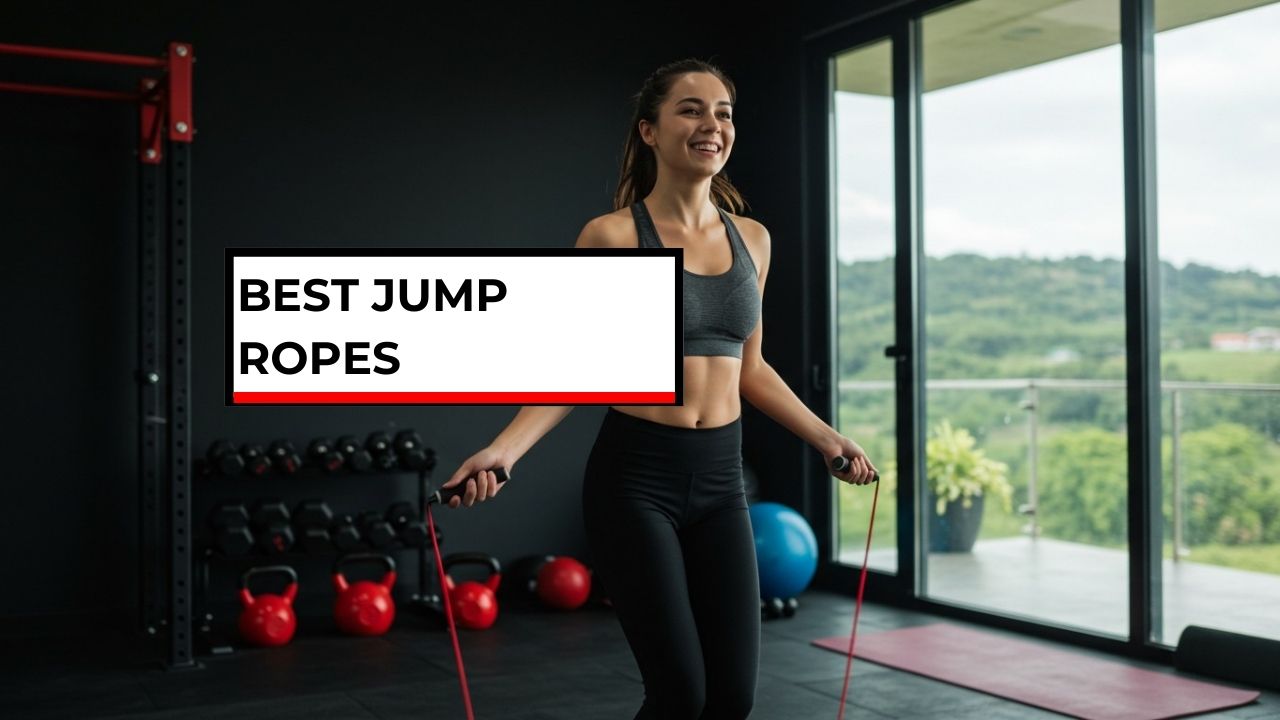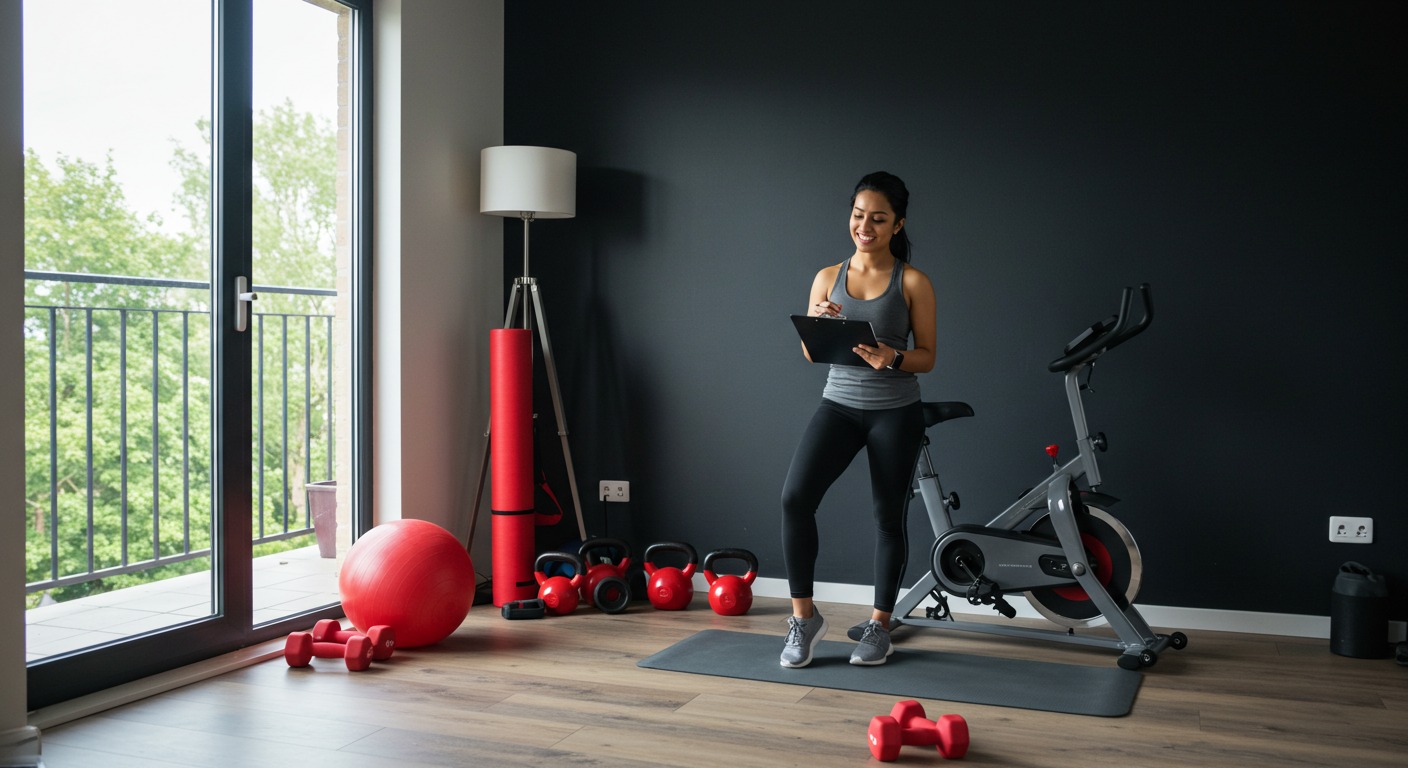Disclosure Information
This blog contains affiliate links. If you make a purchase through one of these links, our team may earn a commission at no extra cost to you. Learn more. Thanks for your support!
Fitting in a gym session can be a challenge. That’s why more and more fitness enthusiasts are turning to home workouts, and jump ropes are proving to be an essential tool for achieving great cardio results.
These versatile, affordable, and space-saving tools provide an effective workout for all fitness levels. Jump ropes are perfect for busy professionals, apartment dwellers, or anyone looking to maximize their cardio routine at home.
According to a study published in Research Quarterly for Exercise and Sport, jumping rope for 10 minutes can provide the same cardiovascular benefits as running for 30 minutes.
But with so many types of jump ropes available, it can be overwhelming to know which ones are right for you. This guide will help you navigate the different types, features, and options to choose the perfect jump rope for your home workouts.
The Quick Overview: Best Jump Ropes
Here’s a brief list of recommended jump ropes and what they’re best for:
- FitSkip Pro Speed Rope: Best for beginners seeking smooth rotation and adjustability
- CrossRope Get Lean Set: Best for varied intensity workouts with interchangeable weights
- EliteBeads Jump Rope: Best for rhythm training and outdoor use
- Benevo Cordless Jump Rope: Best for small spaces and travel workouts
- Tangram SmartRope: Best for data tracking and tech-savvy fitness enthusiasts
Types of Jump Ropes
Jump ropes come in various designs, each offering unique benefits for different exercises and fitness goals. Understanding these differences is key to finding the right fit for your needs.
| Rope Type | Best For | Price Range |
| Basic Speed | Beginners | $8-$20 |
| Weighted | Strength | $15-$40 |
| Beaded | Visibility | $10-$25 |
| Cordless | Small Spaces | $20-$50 |
| Smart | Data Tracking | $40-$80 |
1. Basic Speed Ropes
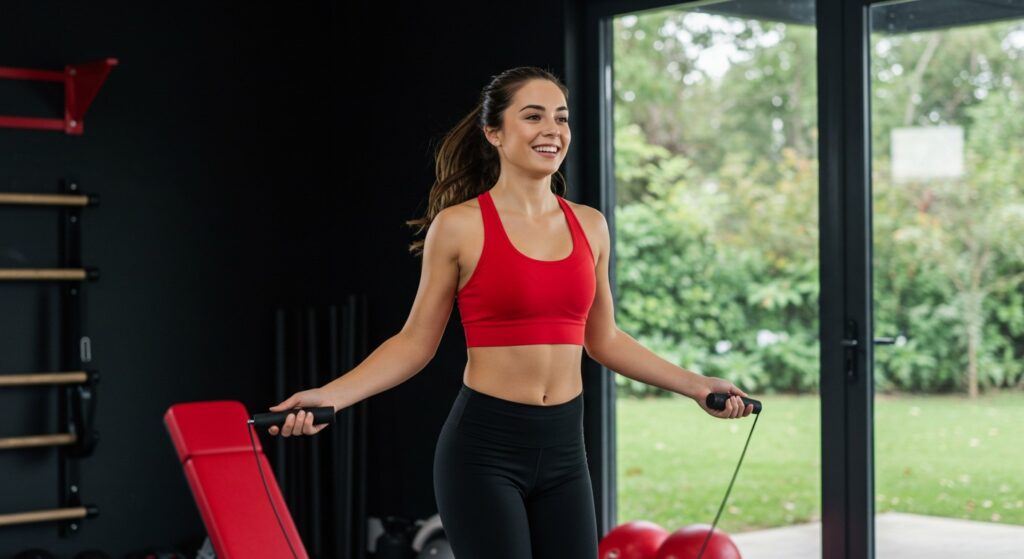
Speed ropes are lightweight, thin ropes designed for fast rotation and basic cardio workouts.
These ropes feature a thin PVC or nylon cord with simple handles, allowing for quick movements and improved coordination. They’re ideal for beginners or those focused on general cardiovascular fitness.
A study by the European Journal of Clinical Nutrition found that regular jump rope exercise can improve heart health by up to 12% in just six weeks.
Best for: Beginners, cardio workouts, improving coordination
Pros: Affordable, lightweight, portable, easy to use
Cons: Limited resistance, basic features, less durable than premium options
Popular Options:
A. XYZ Fitness Basic Speed Rope
- Lightweight PVC cord
- Comfortable foam handles
- Adjustable length
Best for: First-time jump rope users on a budget
B. JumpMaster Essential
- Durable nylon cord
- Ergonomic handles
- Smooth rotation system
Best for: Everyday cardio training
C. FitSkip Pro Speed Rope
- Lightweight construction
- Adjustable length
- Smooth bearing system
Best for: Beginners looking for quality and comfort
2. Weighted Jump Ropes
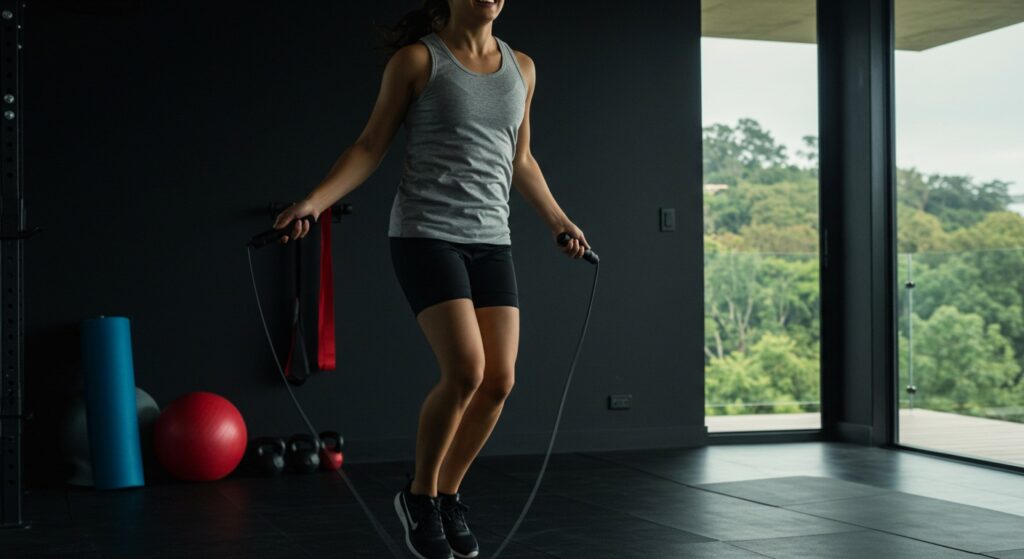
Weighted jump ropes incorporate additional weight in the rope, handles, or both to increase workout intensity.
These ropes provide more resistance than standard speed ropes, engaging more muscle groups and burning more calories. According to the American Heart Association, a 30-minute jump rope session can burn approximately 300-400 calories.
Best for: Strength and cardio combination, increased calorie burn
Pros: Enhanced muscle engagement, higher intensity workouts, builds endurance
Cons: Harder on joints, steeper learning curve, more expensive than basic ropes
Popular Options:
A. HeavySkip Pro
- 1-pound rope weight
- Memory foam handles
- Adjustable steel cable
Best for: Intermediate users seeking added resistance
B. PowerJump Weighted System
- Customizable weights (0.5-2 lbs)
- Sweat-resistant handles
- Ball bearing system
Best for: Progressive strength training
C. CrossRope Get Lean Set (Available on Amazon)
- Interchangeable ropes of different weights
- Ergonomic handles
- Premium construction
Best for: Versatile training with multiple resistance levels
3. Beaded Jump Ropes
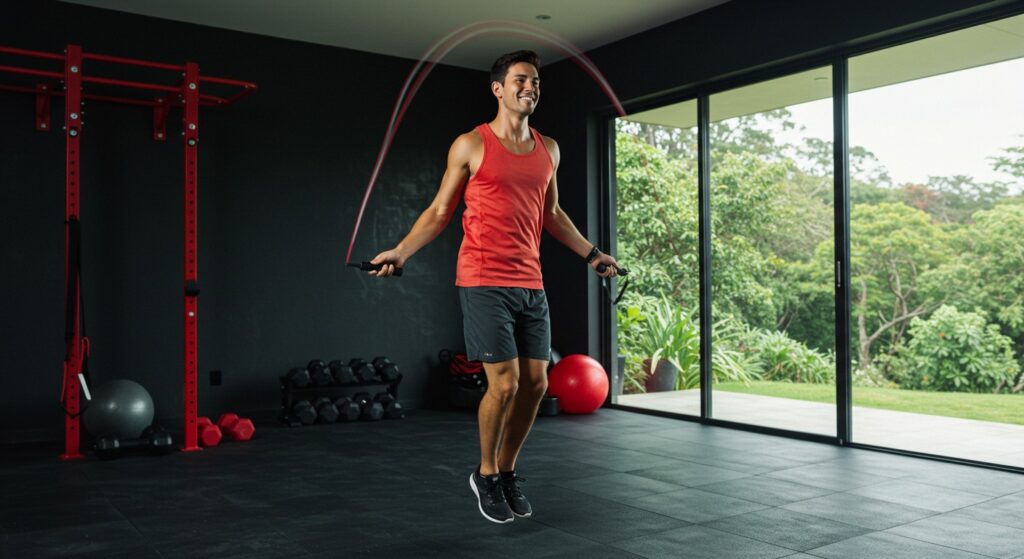
Beaded ropes feature plastic or wooden segments along the cord that create momentum and provide visual feedback.
These ropes maintain their shape better than fabric or plastic cords, making them ideal for beginners and those learning new jump rope techniques. The beads also create a satisfying sound that helps users maintain rhythm.
Best for: Beginners, rhythm training, outdoor use
Pros: Maintains shape well, visual feedback, durable, weather-resistant
Cons: Noisier than other types, less speed potential, can hurt if hit by beads
Popular Options:
A. ClassicBead Premium
- Durable plastic beads
- Wooden handles
- Adjustable length
Best for: Beginners and children learning proper timing
B. SegmentPro Beaded Rope
- Impact-resistant beads
- Cushioned grip handles
- Tangle-free design
Best for: Outdoor use in windy conditions
C. EliteBeads Jump Rope
- Smooth-edged beads
- Comfortable wooden handles
- Adjustable length
Best for: Rhythm-based workouts and technique development
4. Cordless Jump Ropes
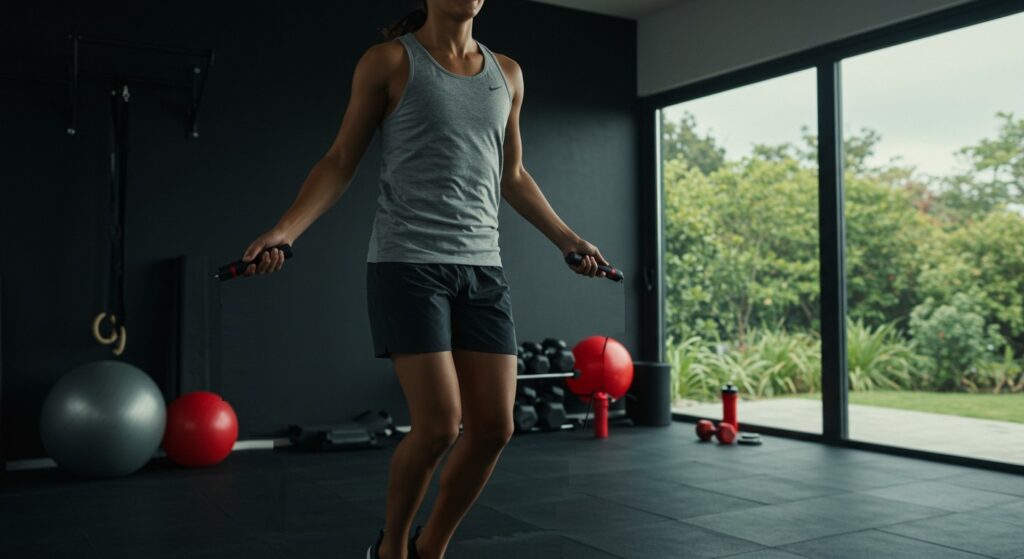
Cordless or “ropeless” jump ropes consist of weighted handles that simulate rope jumping without an actual cord.
These innovative tools allow you to perform jump rope exercises in limited spaces, low-ceiling environments, or while traveling. They’re also great for reducing trip hazards for beginners.
Best for: Small spaces, travel, beginners worried about tripping
Pros: No space limitations, safer for beginners, portable, indoor-friendly
Cons: Less authentic experience, limited feedback, requires more coordination
Popular Options:
A. AirJump Virtual Rope
- 0.5-pound weighted handles
- Built-in jump counter
- LED display
Best for: Tech-savvy users who want workout metrics
B. NoRope Cardio Handles
- Ergonomic design
- Adjustable weights
- Motion sensors
Best for: Customizable resistance training
C. Benvo Cordless Jump Rope – (Available on Amazon)
- Weighted handles with built-in counters
- Comfortable grips
- Adjustable weights
Best for: Travel workouts and low-ceiling environments
5. Smart Jump Ropes

Smart ropes incorporate technology to track workout metrics and enhance the training experience.
These ropes connect to smartphone apps to count jumps, track calories burned, monitor workout duration, and provide personalized feedback. They’re perfect for data-driven fitness enthusiasts.
Best for: Tracking progress, gamified workouts, data enthusiasts
Pros: Detailed metrics, motivation through data, structured workouts
Cons: Higher price point, requires charging, app dependency
Popular Options:
A. TechSkip Pro
- LED display in rope
- Real-time jump counting
- Calorie tracking
Best for: Visual feedback during workouts
B. FitRope Smart System
- App connectivity
- Workout history tracking
- Community challenges
Best for: Social fitness and group challenges
C. Tangram SmartRope – (Available on Amazon)
- LED display shows jump count in mid-air
- Connects to fitness apps
- Comprehensive workout tracking
Best for: Data-driven training and progress monitoring
Understanding Jump Rope Features
Beyond the type of jump rope, several other factors can influence your decision:
1. Rope Material
The material of your jump rope affects its performance, durability, and suitability for different surfaces:
- PVC/Plastic: Lightweight, affordable, good for speed work
- Nylon/Fabric: Soft, less painful if it hits you, suitable for beginners
- Steel Cable: Durable, fastest rotation, best for advanced techniques
- Leather: Traditional material, durable, develops nice patina over time
2. Handle Design
Handles significantly impact comfort and performance during your workout:
- Basic Plastic: Lightweight, affordable, sufficient for beginners
- Foam Grip: Comfortable, absorbs sweat, prevents slipping
- Ergonomic: Contoured to fit hand shape, reduces fatigue
- Ball-Bearing System: Allows for smoother, faster rotation
3. Adjustability
Proper rope length is crucial for effective jumping:
- Fixed Length: Simple, no adjustments needed, must choose correct size
- Adjustable Cord: Can be customized to user height, more versatile
- Replaceable Rope: Allows switching between different types/weights of rope
4. Weight
The weight of your jump rope affects the intensity and focus of your workout:
- Ultralight: Best for speed work, double unders, high-intensity cardio
- Medium Weight: Balanced for general fitness, easier to control
- Heavy: Increased resistance, builds strength, slower rotation
5. Additional Features
Some jump ropes come with extra features that enhance functionality:
- Counter: Tracks number of jumps
- Timer: Records workout duration
- Bluetooth Connectivity: Syncs with fitness apps
- Carrying Case: Provides storage and portability
- Workout Guide: Offers exercise suggestions and routines
Choosing the Right Jump Rope
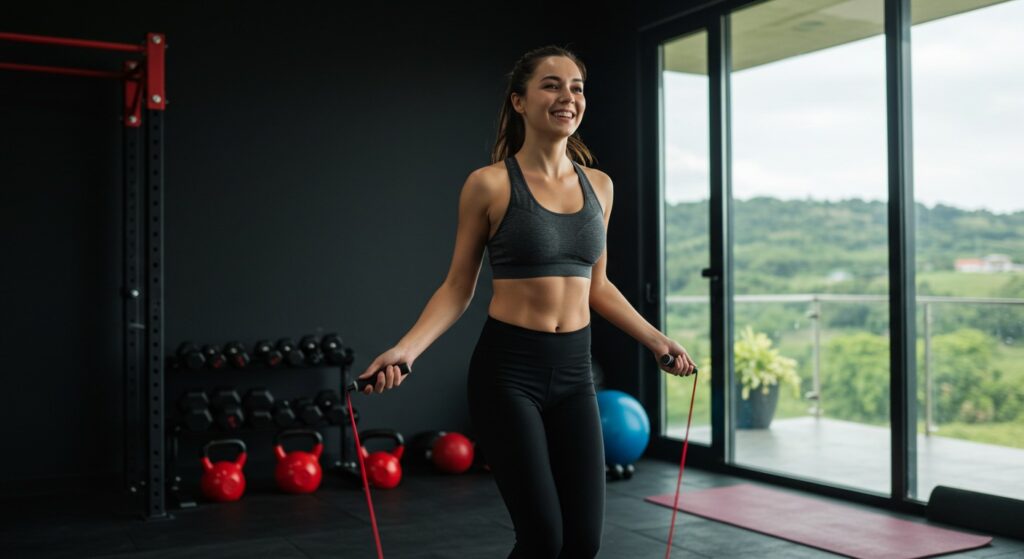
Consider these factors when selecting a jump rope for your home workout:
Fitness Level
Beginners
- Start with a beaded rope or basic speed rope to learn proper technique. These ropes provide enough feedback and are easier to control while you develop coordination.
Intermediate
- Progress to a standard speed rope or lightweight weighted rope to increase intensity and learn more advanced techniques like double unders.
Advanced
- Choose specialized ropes based on your goals: weighted ropes for strength, speed ropes for high-intensity workouts, or smart ropes for performance tracking.
Training Goals
Cardiovascular Endurance
- Opt for a speed rope that allows for sustained jumping at a moderate pace. Focus on longer sessions rather than weight or resistance.
Weight Loss
- Consider a weighted rope to increase calorie burn. Alternating between different weights can also create interval-style workouts for maximum fat burning.
Strength Building
- Choose heavier weighted ropes that engage more muscle groups. Look for options with adjustable weights to progressively increase resistance.
Skill Development
- Select a rope specific to your desired skill. For double unders, a speed rope is best. For crossovers and fancy footwork, a beaded rope provides better feedback.
Space Considerations
Limited Space
- If ceiling height is an issue, consider a cordless jump rope option. For outdoor use, beaded ropes perform better in the wind.
Flooring
- Consider your jumping surface. Hard surfaces require good shoes and possibly a jumping mat. Soft ropes are better for hardwood floors to prevent damage.
Budget
Jump ropes range dramatically in price:
- $5-$15: Basic PVC or beaded ropes, suitable for beginners
- $15-$30: Quality speed ropes, simple weighted options
- $30-$60: Premium weighted ropes, basic smart ropes
- $60+: Professional-grade smart ropes, complete weighted systems
Jump Rope Technique Basics
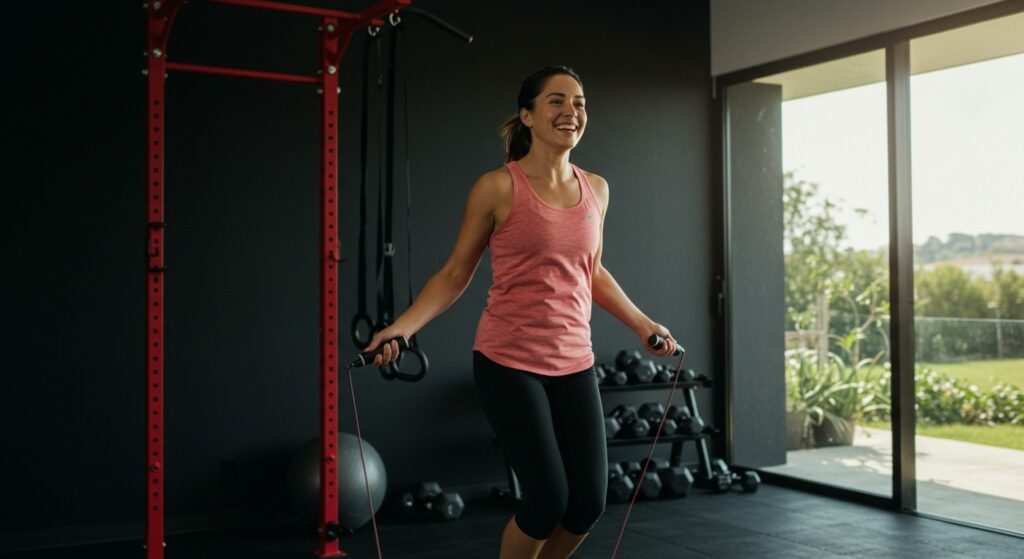
Proper technique is essential for effective and safe jump rope workouts:
- Stand with feet close together, knees slightly bent
- Hold handles with a relaxed grip at hip level
- Rotate the rope using your wrists, not your arms
- Jump just high enough to clear the rope (1-2 inches)
- Land softly on the balls of your feet
- Maintain good posture with core engaged
- Keep elbows close to sides
- Look forward, not down at feet
Summary: Jump Rope Types
| Rope Type | Best For | Price Range |
| Basic Speed | Beginners, general cardio | $8-$20 |
| Weighted | Strength, increased calorie burn | $15-$40 |
| Beaded | Visibility, rhythm training | $10-$25 |
| Cordless | Small spaces, travel | $20-$50 |
| Smart | Data tracking, gamified workouts | $40-$80 |
Maintenance Tips
To extend the life of your jump rope:
- Store properly coiled, not kinked
- Clean handles regularly with mild soap
- Inspect for wear and damage
- Replace worn parts promptly
- Keep away from extreme temperatures
- Avoid jumping on rough surfaces
- Use a carrying case for transportation
- Follow manufacturer’s care instructions
Sample Jump Rope Workout
Here’s a quick workout you can do with any jump rope:
- Basic Jumps (Both feet together) – 3 sets of 30 seconds, 15 seconds rest
- Alternate Foot Jumps (Running in place) – 3 sets of 30 seconds, 15 seconds rest
- High Knees (Knees to waist height) – 3 sets of 20 seconds, 20 seconds rest
- Double Unders (Rope passes twice per jump) – 3 sets of maximum reps in 30 seconds
- Side-to-Side Jumps (Lateral movement) – 3 sets of 30 seconds, 15 seconds rest
- Jump Jack Style (Open and close legs) – 3 sets of 30 seconds, 15 seconds rest
- Sprint Jumps (Fast as possible) – 3 sets of 20 seconds, 40 seconds rest
Conclusion
A quality jump rope is an affordable, space-efficient addition to any home gym. With regular practice, jumping rope can significantly improve your cardiovascular health, coordination, and overall fitness.
By understanding the different types of jump ropes, their features, and how they align with your fitness goals, you can make an informed choice that enhances your fitness routine.
Whether you’re a beginner looking for a basic speed rope or a fitness enthusiast interested in smart technology features, there’s a perfect jump rope for your needs and goals.
Ready to elevate your home cardio workouts? Start with the right jump rope and enjoy the benefits of this simple yet highly effective exercise tool.

